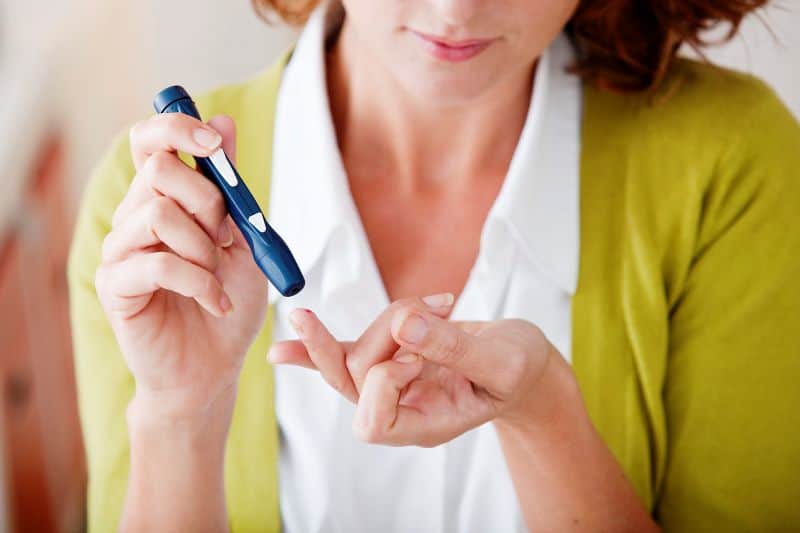Does Medicaid Cover Diabetic Equipment?
Diabetes is a severe condition that affects millions of people in the United States. It can be managed with diet, exercise, and medication but often requires specialized equipment to monitor glucose levels and properly administer insulin doses. This medical treatment is not cheap, and many individuals wonder if Medicaid covers diabetic supplies. The answer is yes, but it depends on where you live and what items are covered.
Medicaid provides some coverage for diabetes treatments depending on individual state programs. For example, most states will cover blood glucose testing strips and other necessary supplies such as lancets, syringes, and glucometers. However, each state may have limits or different eligibility requirements, so you must check with your local health department to find out which services are covered.
By understanding their options, those living with diabetes can get the assistance they need to manage their condition effectively and affordably. This article will discuss the qualifications for Medicaid and why some states offer support. In contrast, others do not know how people with diabetes can access financial aid, save money, and provide resources to help families struggling to pay their medical bills.

The Financial Challenge of Living with Diabetes
Living with diabetes can be a significant financial challenge due to the cost of managing the condition. Diabetes management requires frequent visits to medical professionals for check-ups, monitoring, and additional treatments like insulin injections or other medications. In addition, people with diabetes often need to purchase special equipment such as glucose monitors, lancets, and test strips. These expenses can add up quickly and strain one’s budget.
In addition to the direct costs of managing diabetes, there may be indirect costs such as lost wages due to missed work, transportation costs for attending doctor appointments, and increased insurance premiums. People living with diabetes may incur higher grocery bills if they follow a diabetic diet. Finally, many people with diabetes find that their healthcare costs increase over time as the condition worsens.
Does Diabetes Qualify as a Disability for Medicaid?
To qualify for Medicaid coverage, individuals must meet specific criteria. This includes having a disability or other medical condition that requires ongoing treatment and care. Diabetes is considered a disability in most states, so those living with the disease could be eligible for free or discounted health care, including diabetic equipment.
In addition to meeting disability requirements, applicants must also fall within specific income guidelines. This means they can make up to a certain amount per year. For example, if an individual earns $15,000 a year, they may be able to receive full Medicaid coverage. However, if their income is within the established limit, they may still qualify for some assistance but receive less financial support.
Does Medicaid Provide Support for Diabetic Children?
Yes, Medicaid can provide support for children with diabetes. Depending on the state and type of Medicaid coverage, eligible families may be able to receive assistance with medical expenses related to managing the condition. This could include help paying for medications, insulin supplies, doctor visits, eye exams, lab tests, and other treatments.
Age cut-offs do apply for Medicaid coverage of diabetic children, though. Under most state programs, only children under nineteen are eligible for coverage. However, some states may have different rules and regulations when it comes to eligibility. Families should contact their local Medicaid office to learn more about what services are available in their area.
Medicaid Coverage Can Differ from State to State
Each state has laws regarding Medicaid eligibility, so it is essential to understand how your area handles the program. Depending on where you live, people with diabetes may only have access to limited services or equipment. For instance, New York covers continuous glucose monitoring systems (CGMs), while Texas does not. Therefore, it is best to check with your local health department to find out precisely what is covered in your area.
It is also important to note that some states have different rules regarding diabetes-related treatments. In California, for example, insulin pumps are covered by Medicaid, but the patient must first demonstrate that lifestyle changes have not helped control their blood sugar levels. Other states may require additional forms of documentation before approving the medication.
Standard Equipment Covered in Most States
Most states will cover standard diabetic supplies such as glucometers, test strips, lancets, and syringes. Some states even provide funding for devices like insulin pumps and CGMs. But again, each state has different policies, so it is essential to contact your local health department to find out what types of medications and equipment you can get through Medicaid.
In addition to standard diabetic equipment, many states offer nutritional counseling for people with diabetes. These programs help patients learn about healthy eating habits and provide guidance on managing diabetes through proper nutrition. They may also include education classes and support groups to help individuals better manage their illnesses and stay on track with their treatments.
How Much is the Copay for Diabetic Equipment Purchased Through Medicaid?
In most states, copays are based on a sliding scale. This means that the amount an individual pays for their medication or equipment can vary depending on their income. Those with lower incomes will have smaller copays, while those making more money may have to pay higher rates. Copays also tend to be much lower than if purchased through private insurance companies or out-of-pocket.
How to Find Out More About Your Local Medicaid Program
If you are wondering whether your state offers assistance for diabetic supplies, the best way to find out is to contact your local health department. They can answer questions about eligibility requirements and which items are covered under Medicaid.
You can also visit the Centers for Medicare; Medicaid Services website to get information about your state’s program. The site provides details on eligibility requirements, benefits offered, and other resources available to help people with diabetes pay for their medical bills.
Where to Find Financial Support if Medicaid Doesn’t Cover Your Needs
Even if Medicaid does not cover all your needs, there are still ways to get financial assistance for diabetic supplies. For example, many drug companies offer prescription assistance programs that can help reduce the cost of medications and other treatments. There are also organizations like the American Diabetes Association and JDRF that offer grants for diabetic supplies.
Additionally, some states have special programs to assist low-income individuals with disabilities. These vary from state to state, so it is worth researching your options to see if any apply to you:
- Copay Coupons and Drug Cards: These are typically provided by pharmaceutical companies and can help reduce the cost of medication at participating pharmacies. Individuals must meet specific criteria, such as being under a certain income level, to qualify.
- Discount Programs: Several non-profits and organizations offer coupons or discounts for diabetic supplies. These can be found online or through your local health department.
- State Assistance Programs: Some states have programs that provide discounts on medication, medical equipment, and other services to those who qualify. Again, it is best to check with your state government to see which ones are available in your area.
- Coupon Sites: Although not always guaranteed, some sites offer coupons for diabetic supplies and medications, such as GoodRx and SingleCare. These can provide significant savings for individuals who need assistance paying their medical bills.
Speaking with your doctor may with your doctor if you struggle to cover the cost of your medication or medical equipment. They can offer advice on how to apply for and access support systems.
Is it Legal to Bring Diabetic Equipment in from Another Country?
If you live near the border of Canada or Mexico, you may be tempted to purchase your diabetic supplies from a pharmacy in those countries where it’s more affordable. However, it is legal to bring these medications or equipment into the United States with a valid prescription and a medical authorization form signed by a doctor. Unfortunately, doing so can result in severe penalties, fines, and even jail time.
However, if you have a valid prescription, you can legally bring up to a 90-day supply of medications and equipment across the border. Check with your local health department first, as some states may have different regulations regarding importing drugs or medical supplies.
Under current TSA guidelines, diabetic equipment is allowed in carry-on and checked baggage. However, if you are traveling by plane, it is best to keep a copy of your prescription with you just in case the TSA needs to verify that your supplies are medically necessary.
Do Not Let Finances Affect Your Health
Diabetes is a severe medical condition and should never be taken lightly. However, proper management and care can be managed well, and those suffering from it can lead happy lives. Unfortunately, accessing the right treatments and equipment is not always easy—especially for those without insurance or who face financial hardship.
Fortunately, numerous resources are available to help people with diabetes get the necessary coverage without going into debt. For example, Medicaid provides coverage for necessary supplies and equipment. At the same time, other organizations and charities can bridge the gap between what insurance covers and what is needed to keep diabetes under control.
Save Money on Your Wireless Phone Service
If you qualify for certain government benefits, you may also be eligible for Lifeline or the Affordable Connectivity Program (ACP). Lifeline and ACP are government-run programs to help low-income consumers receive free or heavily discounted communication services.
Click here to find out more and apply for this valuable benefit.
Get a Tablet for $10.01
If you qualify, you can get an 8″ tablet for just $10.01. Apply here to get started!



